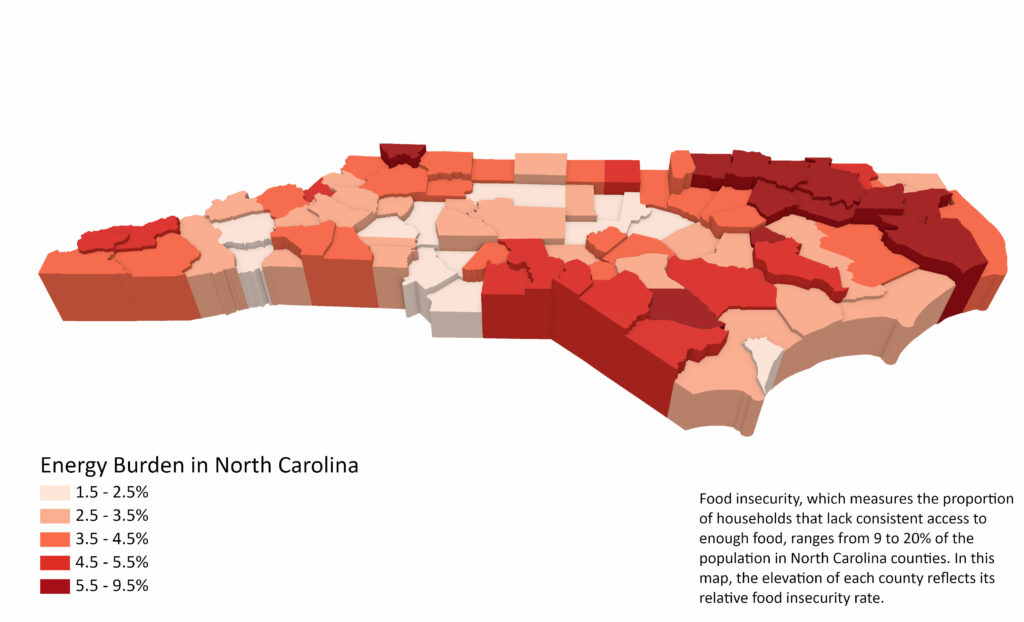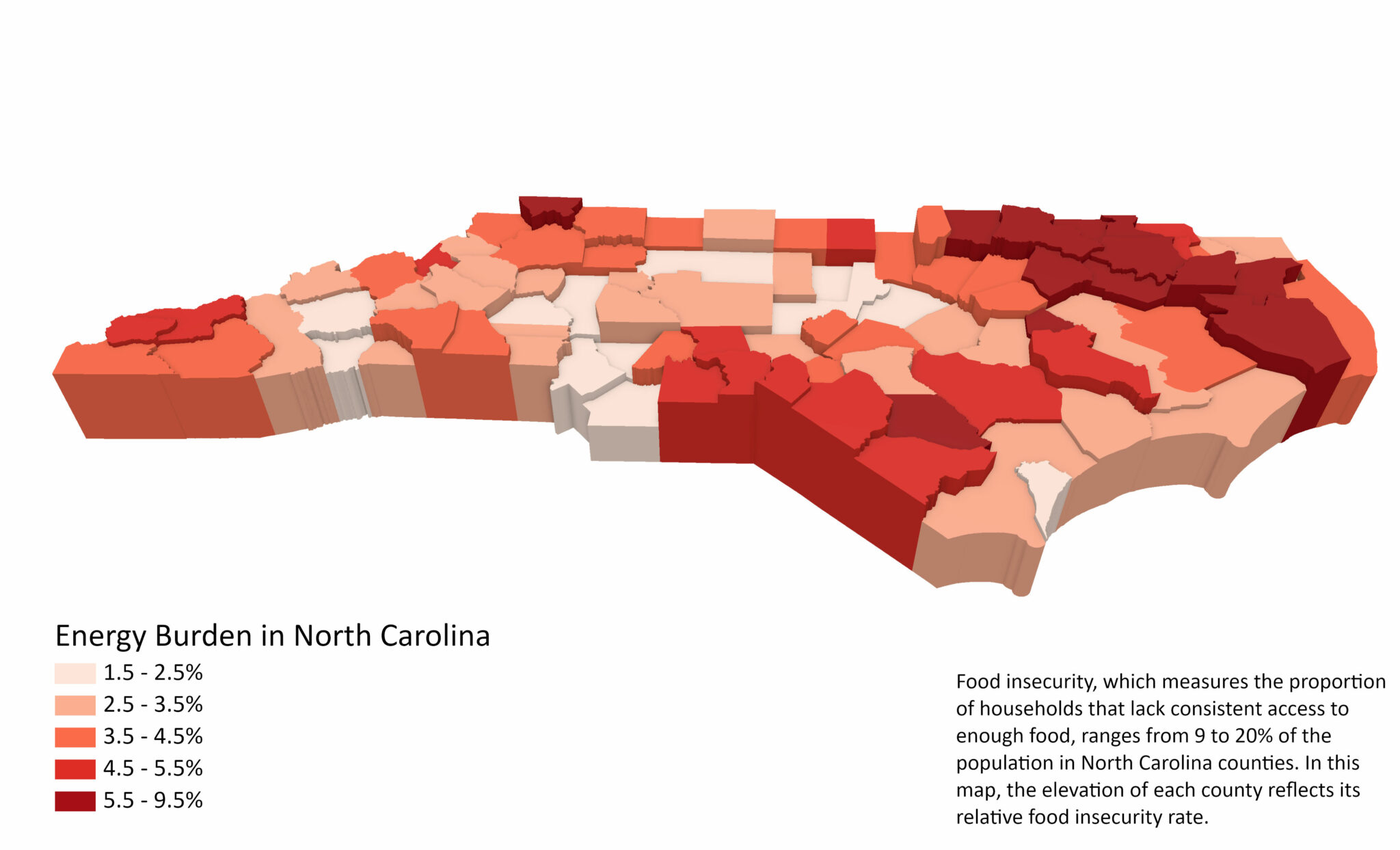Month: August 2023
Map of the Month – August
Grace Parker

A household’s high energy bills are more than just a heating and cooling problem; they can force low-income households to choose between paying for utilities, groceries or medicine. Studies demonstrate that difficulty covering energy and food costs are often intertwined. Hardship paying energy bills, particularly during extreme heat or cold periods, often makes it more difficult for low-income households to purchase enough food, known as the “heat or eat” dilemma. According to the 2022 Residential Energy Consumption Survey from the U.S. Energy Information Administration (EIA), nearly 7 million households in the Southeast have cut back on food or medicine to pay their energy bills, most likely due to cooling costs rather than heating.
This month’s map compares energy costs with food insecurity in North Carolina, where counties with high energy burdens tend to have higher rates of food insecurity. In these counties, high energy burdens are not the only cause of food insecurity, but the people living here are likely choosing between paying energy bills and buying food.
Rural North Carolina counties have higher than average rates of energy burden and food insecurity. In contrast, metropolitan areas like the Research Triangle, Charlotte, Greensboro, and Asheville have lower rates of energy burden and food insecurity. Counties in northeast North Carolina near Kitty Hawk have the state’s highest energy burden and food insecurity rates. The correlation between places that struggle with high energy costs and food insecurity underlines the importance of energy efficiency and weatherization. These programs help households maintain a comfortable and safe temperature, resulting in lower energy costs and more money for other necessities like food.


